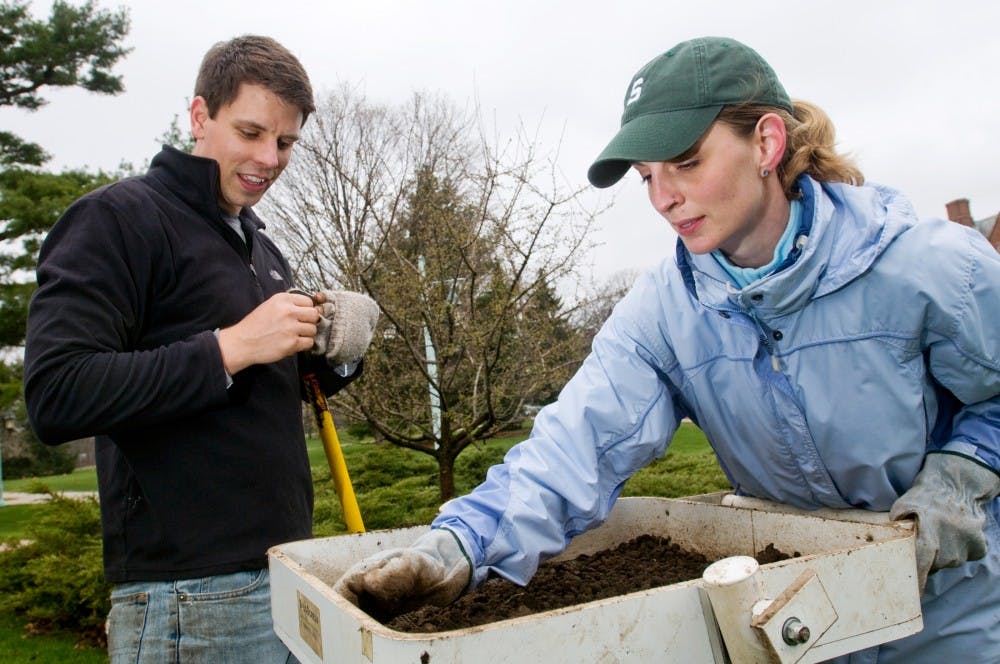At an MSU archaeology field school last summer, Chris Stawski helped lead a team of archaeology students to uncover evidence that MSU students of 100 years ago are very similar to ones today — finding a trash pit on campus dating from the late 1800s that contained everything from a pocketknife to discarded inkwells to clay smoking pipes.
“Even though (smoking) was banned, they were still breaking the laws like they do today,” Stawski said.
Stawski, a doctoral student in archaeology, currently serves as campus archaeologist in the MSU Campus Archaeology Program.
Last week he worked with a team at Walter Adams Memorial Field — near the Music Building and Cowles House — to survey the area before construction crews began putting in a new irrigation system.
Anthropology professor Lynne Goldstein, director of the Campus Archaeology Program, said the work at the field isn’t the most “exciting” the team has done, but the program is responsible for checking to see if anything is beneath the surface before construction or landscaping teams disturb university grounds.
“If you come to us on any given day, we don’t find much — but if you put it together, it’s a lot,” she said.
History and anthropology senior Theresa Koenigsknecht, an intern with the program, said the team didn’t find much beyond some nails, ceramics and bricks at the site since it has been in use as a field for some time.
The Campus Archaeology Program started shortly after MSU’s sesquicentennial in 2005 when a group of archaeology students and professors excavated Saint’s Rest, the first dormitory on campus — close to what is now the MSU Museum, Goldstein said. The dormitory was built in 1856 and burned down in 1876. During excavations, the team uncovered a number of artifacts, including wood-burning stoves, a toothbrush, slate pencils and liquor bottles, according to a historical marker now at the site.
Afterward, President Lou Anna K. Simon and the university decided to support the formation of the campus archaeology program — one of the only ones at a U.S. university, she said. The program will run another archaeology field school on campus this summer, Goldstein added.
Stawski said last summer’s dig also uncovered two areas where American Indians used to live — showing that the land was in use “before campus was campus.”
Overall, the team’s work to examine human behavior and get a feel of what day-to-day life was
like for former MSU students and faculty, he said.
Koenigsknecht and anthropology senior Stephanie Cross, also an intern with the program this semester, said some of the most interesting artifacts they’ve seen have been bottles from what used to be a dump site in what is now Brody Complex Neighborhood.
Interns were responsible for organizing and cataloging many of these artifacts this semester, and
Koenigsknecht said they identified some of the remains as old Dairy Store bottles, Vernors bottles and alcoholic beverages from the turn of the century — possibly when prohibition still was in place.
Both students worked on archaeology research projects this semester — Cross’ focusing on disabled studies, and
Koenigsknecht is investigating MSU’s energy use through time.
“I think it’s essential for a university that prides itself on a long history and beautiful campus buildings that you take care of the material culture that you have
available,” Koenigsknecht said.
Support student media!
Please consider donating to The State News and help fund the future of journalism.
Discussion
Share and discuss “Archaeology students explore old campus life ” on social media.



